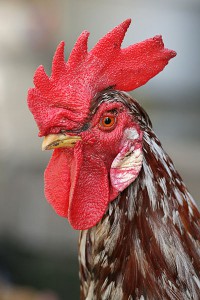![]() Looking at the problem of sex determination from our anthropocentric perspective, it is easy to forget that the world doesn’t revolve around the Y chromosome. Some animals determine their sex simply by changing the number of X chromosomes (BFF of many Genome Biology readers, C. elegans, belongs to this group). For others, like crocodiles and some turtles, the sex will be determined by the temperature at which the egg incubates. The platypus has 10 sex chromosomes, but, surprisingly, seems to lack the sex-determining SRY gene. And then there is the ZW sex chromosome system in birds, in which the sex of the offspring depends on the ovum and not the sperm.
Looking at the problem of sex determination from our anthropocentric perspective, it is easy to forget that the world doesn’t revolve around the Y chromosome. Some animals determine their sex simply by changing the number of X chromosomes (BFF of many Genome Biology readers, C. elegans, belongs to this group). For others, like crocodiles and some turtles, the sex will be determined by the temperature at which the egg incubates. The platypus has 10 sex chromosomes, but, surprisingly, seems to lack the sex-determining SRY gene. And then there is the ZW sex chromosome system in birds, in which the sex of the offspring depends on the ovum and not the sperm.
This is not the only difference between us and chickens though. In mammals, the embryos are sexually indifferent until the sex-determining genes kick in and gonadal differentiation begins, suggesting that sex differentiation is hormone-driven. Only recently did we get an indication that this might not be so in birds. In 2010, Michael Clinton’s group from the Roslin Institute in Edinburgh published an article in Nature describing a peculiar case of chimeric chickens, which were half male, half female. They found that sex differentiation in chickens is cell autonomous, or in other words that it is chromosomes, not hormones, that drive it.

An article published today in Genome Biology describes a study led by Craig Smith in which the authors analyze the transcriptome of the chicken sex chromosomes and perform the most comprehensive annotation of the W chromosome to date.
Smith and colleagues perform RNA sequencing of chicken male and female blastoderms, and of the embryonic gonads prior to sex differentiation. They confirm that genes are expressed differentially between sexes even before gonadogenesis. They also identify and annotate twenty-six W chromosome genes. In the past, DRMT1 was identified as a male-determinant gene in chicken, but the female counterpart has so far remained elusive. Smith and colleagues pin-point one of the W chrosomome genes, HINTW, as a possible female-determinant (but come just short of calling it that). The status of HINTW with respect to sex determination will have to be confirmed by future functional studies.
Smith and colleagues’ excellent annotation of this until now poorly described chromosome is another step in helping us understand how sex determination and differentiation work in birds. And the story doesn’t end here. If anything, it just begins.
Comments